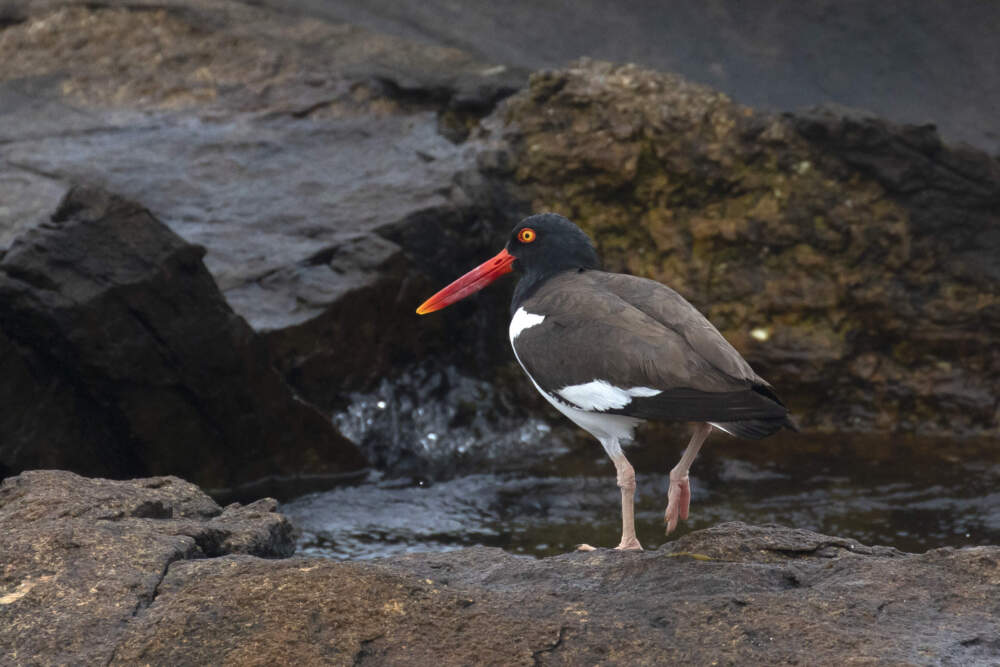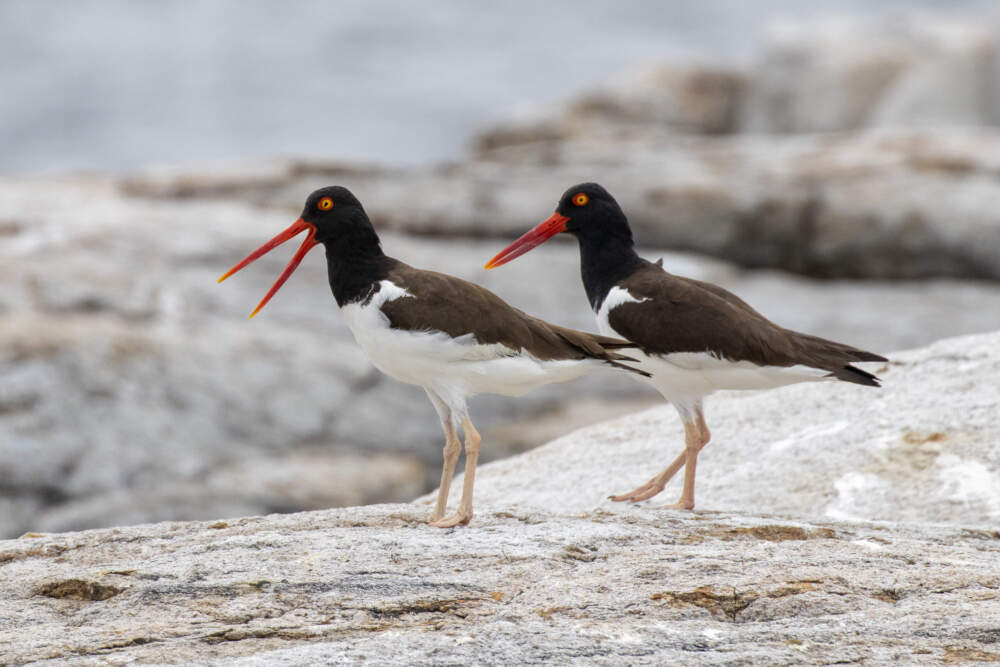Advertisement
A shorebird with 'a lot of personality' makes a comeback

Conservationists are reporting a 45% increase in the population of the American Oystercatcher, a shorebird found along the U.S. Atlantic and Gulf coasts. The rebound, measured from 2008, is a remarkable success story, given that most coastal birds are declining because of habitat loss, human disturbance and climate change.
"This is really exciting because this is not the trend for most shorebird species," said Shiloh Schulte, senior shorebird scientist at the Plymouth-based nonprofit Manomet. The group has led a 15-year effort to protect the birds, in partnership with conservation groups across the East and Gulf coasts.
The American Oystercatcher is a striking bird: black and white with bright orange eyes and a beak that looks like a carrot.
"They have a lot of personality," Schulte said. "You don't really forget seeing an oystercatcher."
In 2000, Manomet identified the oystercatcher as a species at high risk for population decline because of its narrow habitat range in the intertidal zone, overlap with human activity, and the potential effects of climate change, like bigger storms and sea-level rise.
After studying their life cycles, scientists found that a lot of their eggs were never hatching.
"The first nest they lay would get washed out by a storm. And then the second nest they lay gets eaten by raccoons. And then the third nest they lay gets disturbed by people recreating over the 4th of July weekend," Schulte said. "One after the other, different factors hit."

To stop the decline before the species became threatened, conservationists instituted a wide range of protections suited for specific locations. In New York's urban Rockaways, the birds got small shelters so chicks could hide from people, sun and feral cats. On Martha's Vineyard and Nantucket, parts of beaches were fenced off to protect breeding birds, and volunteers explained the fencing to puzzled dog-owners and beach-goers.
"The oystercatcher provides an excellent model for how we can do this — bring together a coalition of experts and willing partners to address those specific areas that we've identified as weak points," said Schulte.
Such efforts benefit other shorebird species as well, like the piping plover, which has made strong gains this year. Schulte hopes other shorebirds on the decline like Whimbrels and Red Knots will follow the oystercatchers' upward trajectory. "We really need to address this or we're going to lose these species forever."
